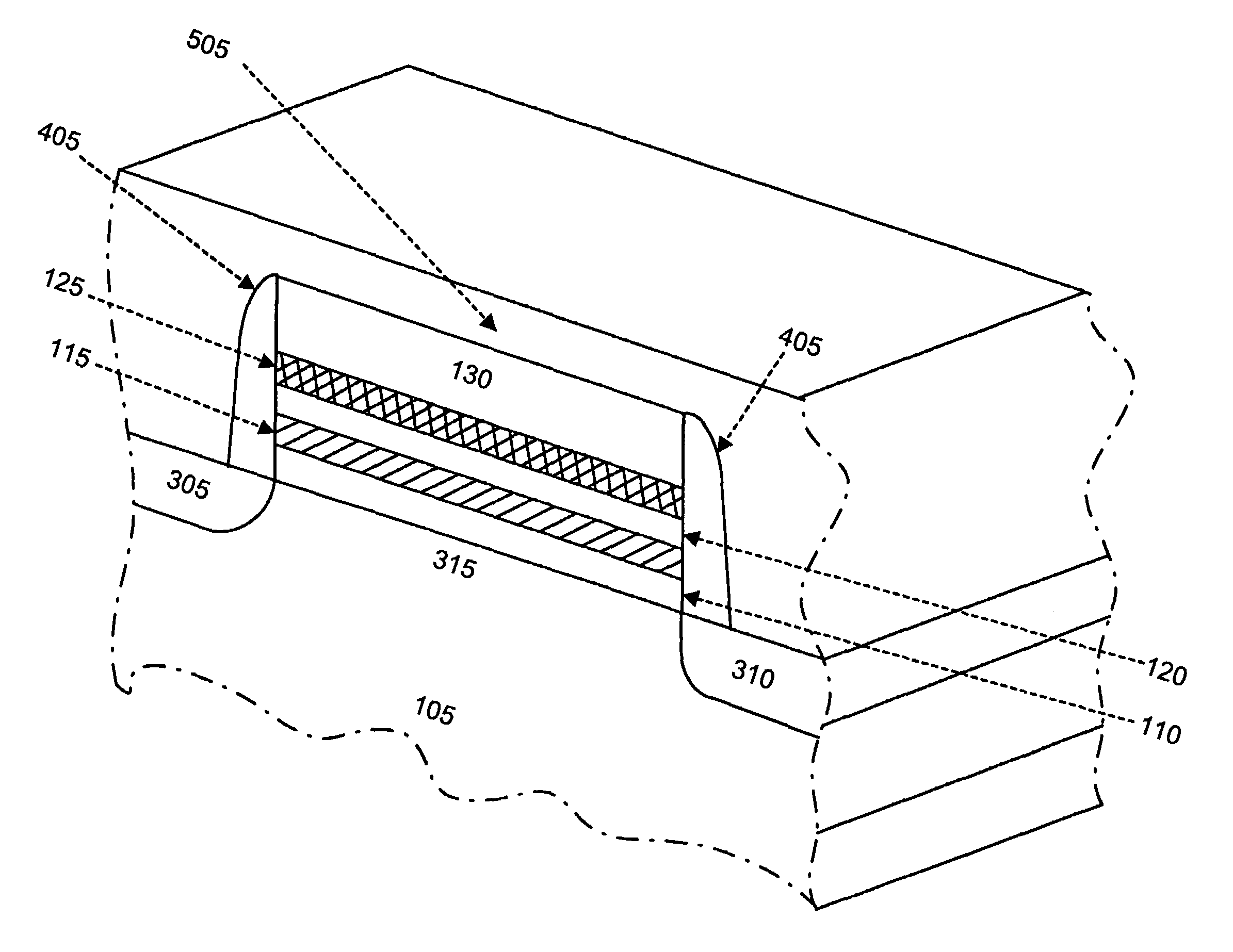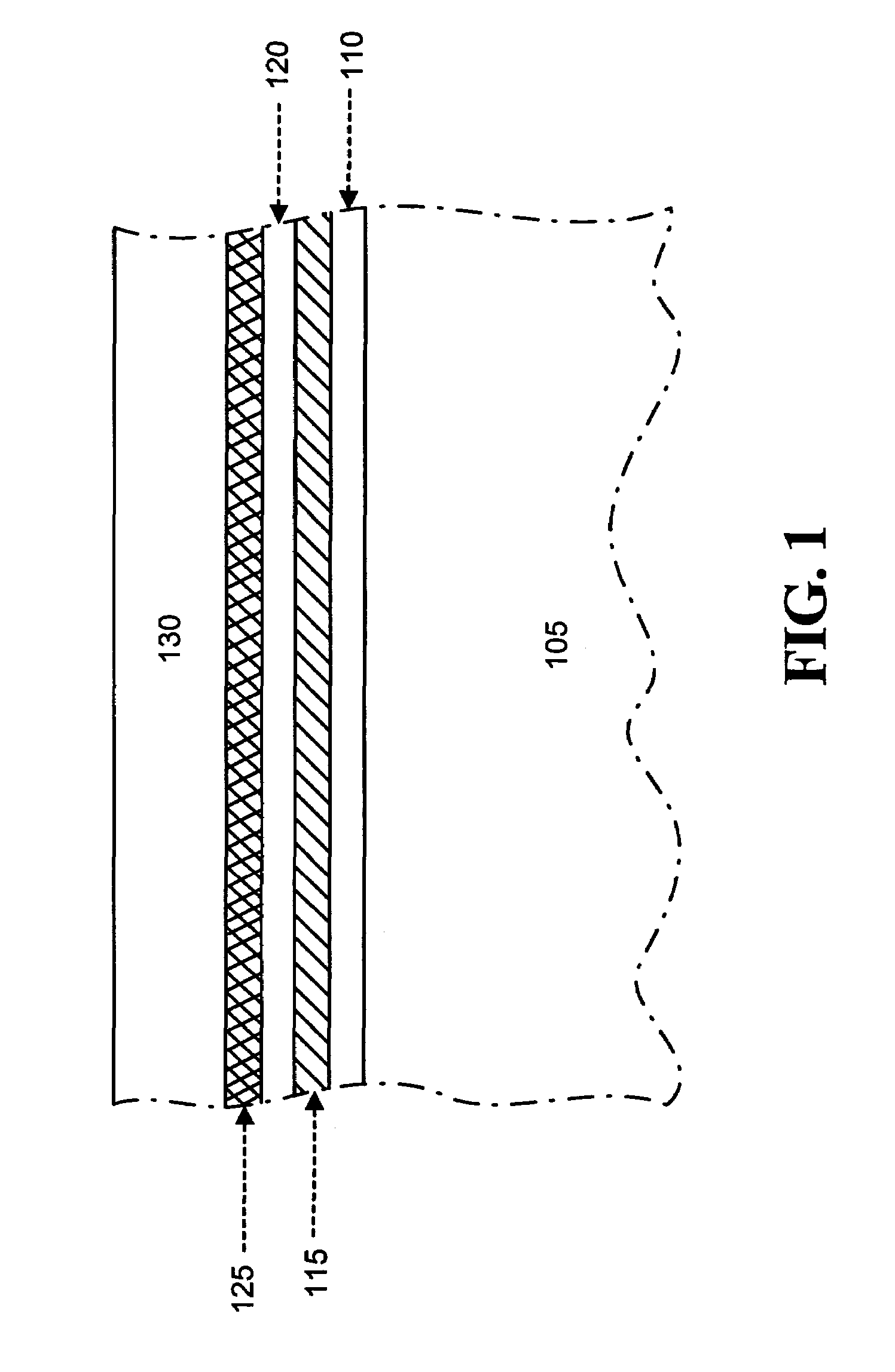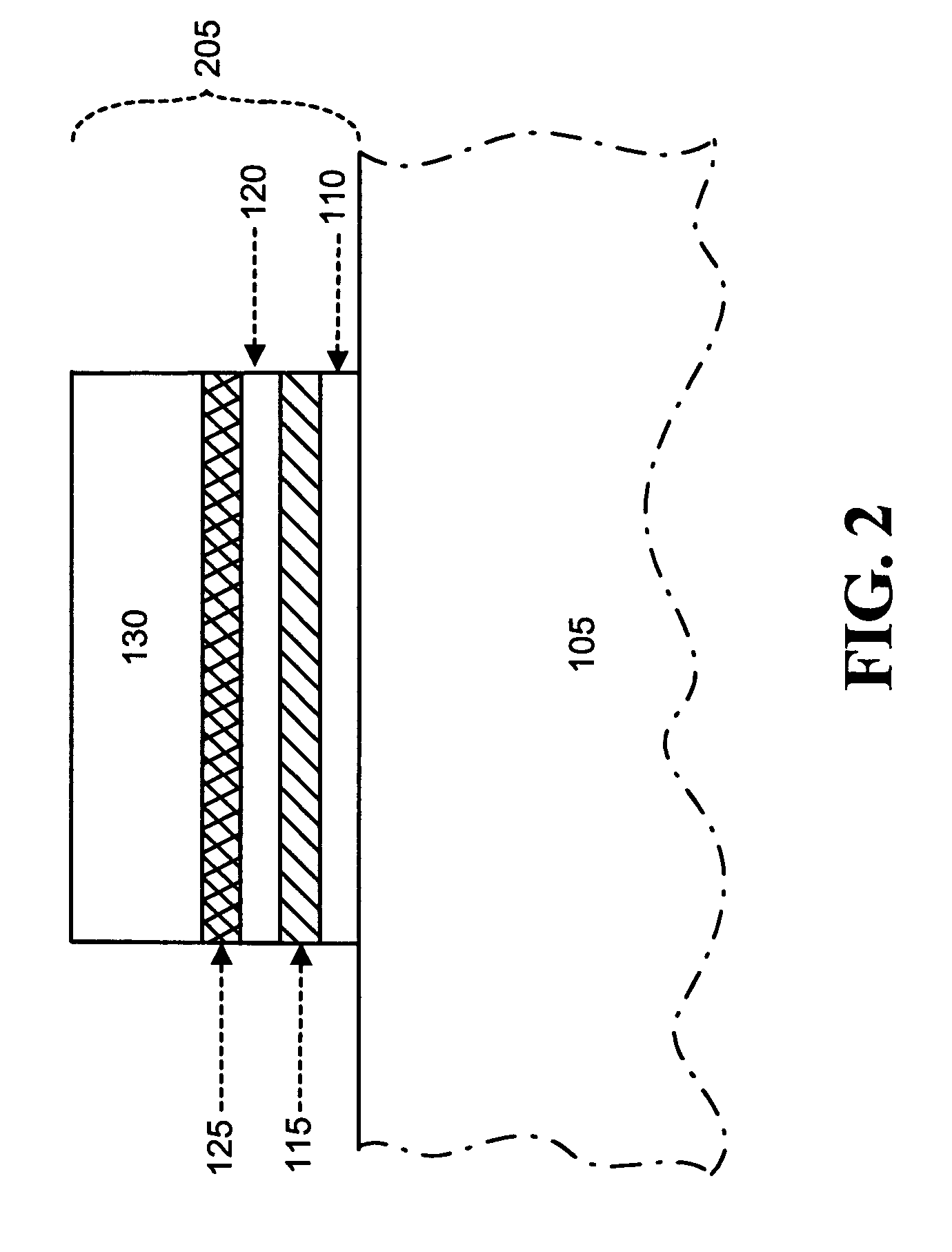High K stack for non-volatile memory
a non-volatile memory and dielectric constant technology, applied in the field of semiconductor devices, can solve the problems of affecting the device's overall performance and reliability, damage to the bottom oxide layer of the ono structure, etc., and achieves the effect of less damage, less charge loss, and convenient channel eras
- Summary
- Abstract
- Description
- Claims
- Application Information
AI Technical Summary
Benefits of technology
Problems solved by technology
Method used
Image
Examples
Embodiment Construction
[0018]The following detailed description of the invention refers to the accompanying drawings. The same reference numbers in different drawings may identify the same or similar elements. Also, the following detailed description does not limit the invention. Instead, the scope of the invention is defined by the appended claims and their equivalents.
[0019]FIG. 1 illustrates a cross-section of a semiconductor substrate 105 according to an exemplary embodiment of the invention. Substrate 105, consistent with one aspect, may include a crystal silicon wafer. In other implementations, substrate 105 may include a gallium arsenide layer, a silicon-on-insulator structure, a germanium layer, a silicon-germanium layer, or other conventional materials used to form a semiconductor substrate. A bottom oxide layer 110 may be formed on substrate 105. Bottom oxide layer 110 may be formed on substrate 105 using, for example, existing deposition processes, such as a chemical vapor deposition (CVD) proc...
PUM
 Login to View More
Login to View More Abstract
Description
Claims
Application Information
 Login to View More
Login to View More - R&D
- Intellectual Property
- Life Sciences
- Materials
- Tech Scout
- Unparalleled Data Quality
- Higher Quality Content
- 60% Fewer Hallucinations
Browse by: Latest US Patents, China's latest patents, Technical Efficacy Thesaurus, Application Domain, Technology Topic, Popular Technical Reports.
© 2025 PatSnap. All rights reserved.Legal|Privacy policy|Modern Slavery Act Transparency Statement|Sitemap|About US| Contact US: help@patsnap.com



